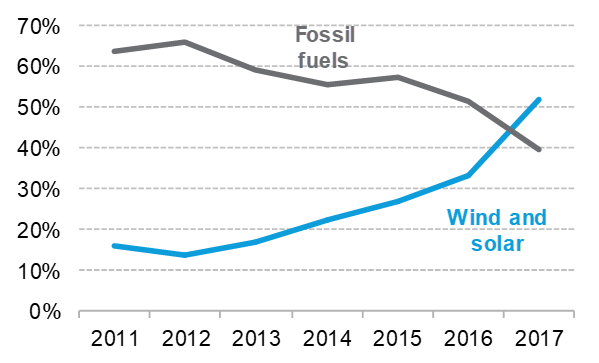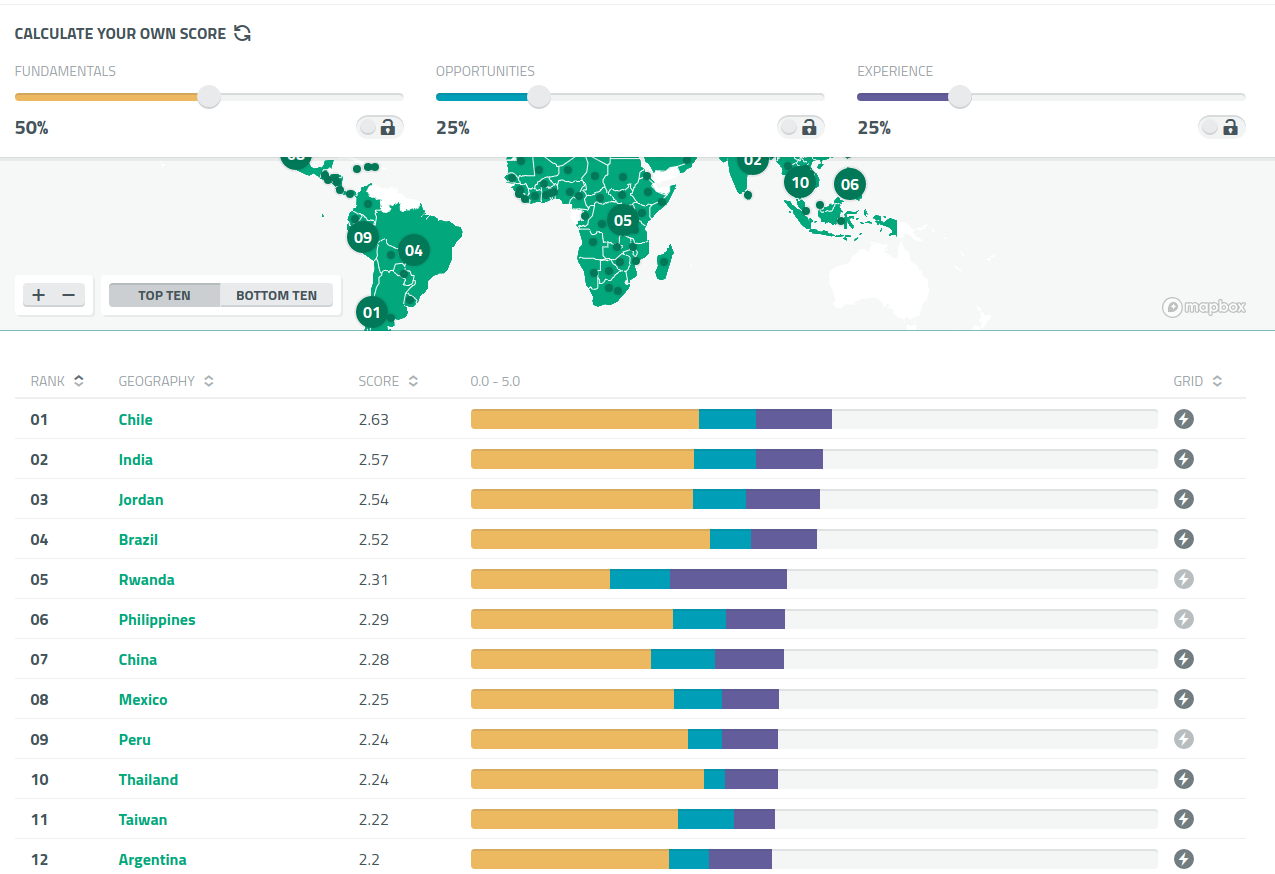Thailand is the regional leader in total installed renewable capacity in Southeast Asia.The latest Alternative Energy Development Plan (AEDP) 2015-36 sets a target for renewables to account for 20% of generation by 2036.
It was the first country in SEA to implement a feed-in premium intended to spur investment and development of renewable energy projects.
Thailand’s power market is partially liberalized, with the generation sector opened up to the participation from private players.
Thailand has achieved 100% electrification. In the 2015 PDP, total electricity demand is Fundamentals forecasted to increase at an average growth rate of 2.68% in the period 2014-36.
Stimulated by the attractive feed-in premium, also known as the ‘adder’, introduced in 2007, renewable energy capacity has grown significantly. Between 2010 to 1H 2018, asset financing for renewable projects totaled $9.7 billion.
Developing Nations assume mantle of global clean energy leadership
Since 2010, developing countries have collectively accounted for a larger share than wealthier countries of clean energy asset finance, a category that includes capital for wind, solar, geothermal, biomass and small hydro projects.

Surging electricity demand, sinking technology costs, and innovative policy-making have allowed developing nations to seize the mantle of global clean energy leadership from wealthier countries, a comprehensive new study from BloombergNEF (BNEF) concludes.
Between them, emerging market nations surveyed by BNEF’s annual Climatescope (www.global-climatescope.org) project accounted for the majorities of new clean energy capacity added and new funds deployed, globally in 2017.
"A zero carbon economy by 2060 will be using 5 times as much electricity as today. We also think there will be an enormous hydrogen economy – hydrogen production will increase 10 times in the next 40-50 years." –@AdairTurnerUK, Chairman, Energy Transitions Commission. #BNEFSummit pic.twitter.com/3u1fQ72rMY
— BloombergNEF (@BloombergNEF) November 27, 2018
Driving down clean energy costs
These countries are also playing the leading role in driving down clean energy costs, so that energy access can be expanded without boosting CO2 emissions.
In 2017, developing nations added 114GW of zero-carbon generating capacity of all types[1], with 94GW of wind and solar generating capacity alone – both all-time records. Concurrently, they brought on line the least new coal-fired power generating capacity since at least 2006.
New coal build in 2017 fell 38% year-on-year to 48GW. That represents half of what was added in 2015 when the…
Source link : Thailand leads the SEA region for solar development by Pr News
Discover more from Siam News Network
Subscribe to get the latest posts to your email.

